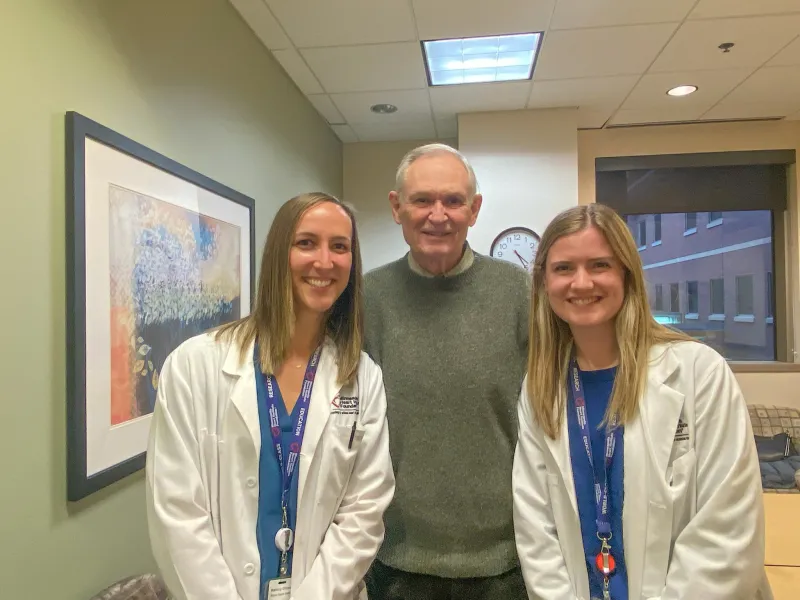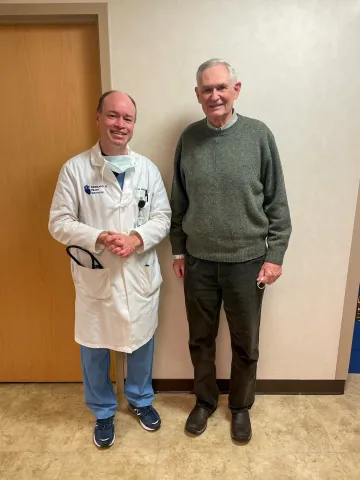Mike Bingen’s Heart Journey with Atrial Fibrillation

Mike Bingen likes to be active doing things around the house and outdoors. He’s a hunter and likes to fish and stay physically active. His heart journey began when he was first diagnosed with atrial fibrillation (AF), a very common heart rhythm condition.
“It started about 20 years ago and it would be very intermittent, but as I got older, it became more frequent and lasted longer,” said Mike. “In the last couple years, it became very draining. When I’d have AF, it would be like I just ran a marathon, so I got to the point where I needed to address it.”
Mike has always been in good health. He first noticed symptoms when he was at a boat show in Miami and he knew something was going on with his heart. He went to the emergency room and after a long night of waiting and resting, it all stopped. The cardiologist reassured Mike that he did not have a heart attack and told him to see his cardiologist to have a few tests when he returned home to Wisconsin. Mike got good results back from a stress test and thought everything was fine. A year or two passed before Mike felt another episode with his heart.
“Somebody at some point said to me that I had atrial fibrillation,” said Mike. “Initially, I was able to manage it and stay in touch with my cardiologist.”

Mike saw at least five cardiologists over the last 20 years and as the AF became more frequent and draining, he continued searching for other options. That’s when they found Dr. Melby at the Minneapolis Heart Institute Foundation and he mentioned the opportunity to consider a new ablation procedure that was part of a research study.
Catheter ablation is a common treatment for patients with AF. Most catheter ablation systems use either heat or cold energy. The new technology currently in research is called pulsed field ablation and utilizes a new non-thermal technology called irreversible electroporation.
“My initial appointment was for a consultation and that’s when I learned about pulse field ablation which was a new procedure they were studying,” said Mike. “I'd rather treat the cause than a symptom, which is why this procedure appealed to me. I learned I was a candidate.”
As part of qualifying for the research study, Mike wore a heart monitor for a week and the research team evaluated everything about his heart health to make sure he met the requirements to be part of the study. Mike’s procedure was done on his birthday.
“I have a strong faith and I was not worried about the procedure,” said Mike. “I was impressed by the time the doctor and the team gave to me. They sang happy birthday to me in the operating room and the next thing I knew, I woke up and I was able to have some ice cream.”
Mike acknowledges that the team, including Dr. Melby, spent a lot of time in his appointments throughout the process to ensure his questions were answered. Any research study has required steps and details that are shared with any patient before confirming it is the right option for them.
Today, Mike feels good. He wakes up feeling refreshed and he’s able to enjoy living life to the fullest with his wife, Sharon. They enjoy time with their family, including three daughters and eight grandchildren.
“This is giving him a new lease on life, which is totally amazing,” said Sharon. “We are so thankful.”

